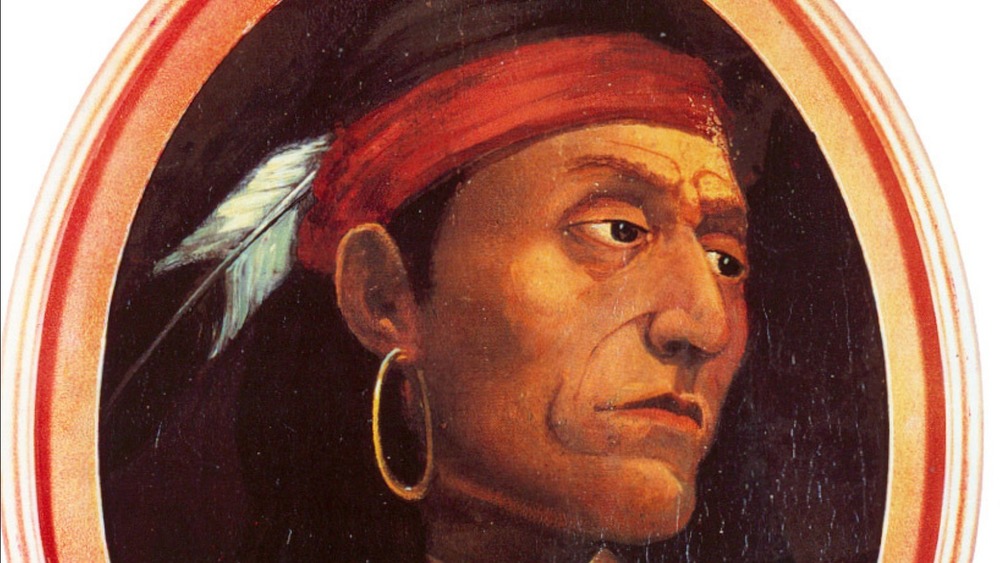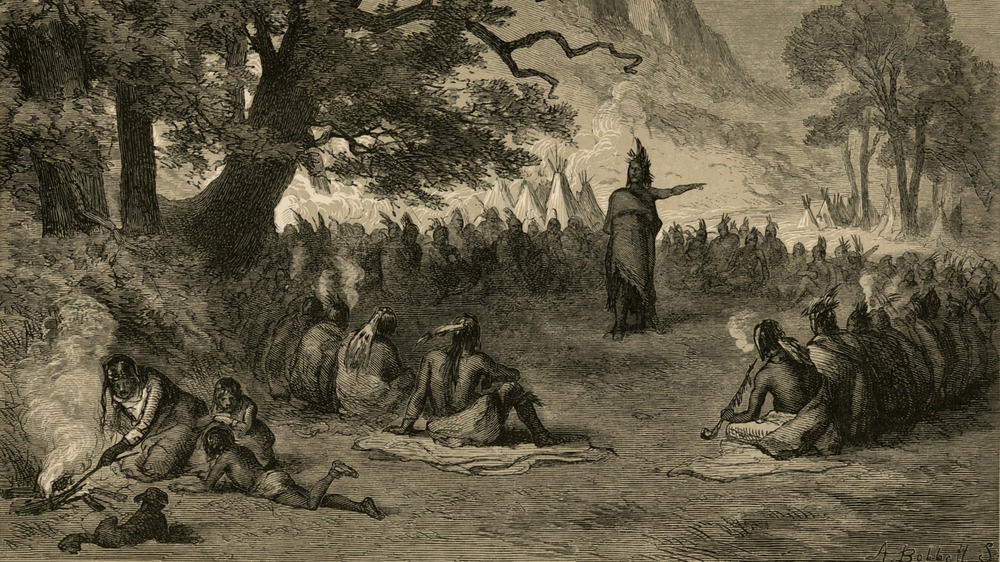How Pontiac's War Led To The American Revolution
What is now the United States was colonized by people from France, England, and Spain, and their opposing claims to land led to what History called a "long imperial struggle." In the early 1750s, France's attempts to expand into the Ohio River valley didn't sit well with British colonists, particularly those in Virginia. Per another History article, the river valley consisted of fertile land and "held major trade promise."
Armed conflict began in 1755. In 1756, Great Britain officially declared war on France, and thus began the French and Indian War, also known as the Seven Years War. Several Native American leaders aligned themselves with the French during the war, including Pontiac, an Ottawa chief. The war continued until 1763, at which point the Treaty of Paris was signed and went into effect on February 10, by which Canada was taken from France and given to Great Britain. Great Britain also took over the colonization of Florida from Spain, their rivals during the war, while Spain received control of Louisiana and France kept control of the West Indies.
As reported by History, as the war was ending and Britain took over more and more land, "Native Americans living in former French territory found the new British authorities to be far less conciliatory than their predecessors." Starting in 1762, Chief Pontiac organized tribes "from Lake Superior to the lower Mississippi" to seize the nearest colonial forts and then join forces "to wipe out the undefeated settlements."
Pontiac's War led to Native American land rights, for a time
In April of 1762, per History, Chief Pontiac held a war council near Detroit, Michigan and made plans to gain access to a Detroit fort by pretending to negotiate a peace treaty. The plans were discovered by a British major and the British were waiting for Chief Pontiac and his army, forcing a siege. At the same time, allies from the Delaware, Shawnee, and Seneca tribes planned similar takeovers in Pennsylvania, Michigan, New York, Maryland, and Virginia. Another History article quotes historian David Dixon, who called the fighting "brutal," with "little doubt that the English and their Indian adversaries both indulged in unspeakable" acts.
Eventually, Britain's King George III issued a proclamation in October of 1763, as shown on Yale Law School's Lillian Goldman Library's website, stating no British colonists could travel through or take over any land west of the Appalachian Mountains without government permission. History called this "the first time Native Americans' rights to their own tribal lands had been recognized in the laws of one of North America's colonial conquerors."
Some colonists, however, felt entitled to the land that was now "reserved" for Native Americans. Great Britain sent troops to keep colonists off the land, but "black markets in land sprang up among rich colonists who felt entitled to Native lands, and Native Americans whose land was their only asset." This "laid the groundwork" for the American Revolution; George III's proclamation was voided 13 years later in what had become the United States of America.

